Potrebujeme váš súhlas na využitie jednotlivých dát, aby sa vám okrem iného mohli ukazovať informácie týkajúce sa vašich záujmov. Súhlas udelíte kliknutím na tlačidlo „OK“.
ASTM D5783-95(2012)
Standard Guide for Use of Direct Rotary Drilling with Water-Based Drilling Fluid for Geoenvironmental Exploration and the Installation of Subsurface Water-Quality Monitoring Devices
Automaticky preložený názov:
Štandardné Príručka pre použitie priameho vŕtanie s vodnej báze vrtný výplach pre Geoenvironmental prieskum a inštalácia podpovrchových vôd, kontroly kvality zariadenia
NORMA vydaná dňa 1.9.2012
Informácie o norme:
Označenie normy: ASTM D5783-95(2012)
Poznámka: NEPLATNÁ
Dátum vydania normy: 1.9.2012
Kód tovaru: NS-32531
Počet strán: 7
Približná hmotnosť: 21 g (0.05 libier)
Krajina: Americká technická norma
Kategória: Technické normy ASTM
Kategórie - podobné normy:
Anotácia textu normy ASTM D5783-95(2012) :
Keywords:
direct-rotary drilling method, drilling, geoenvironmental exploration, groundwater, vadose zone, ICS Number Code 73.100.30 (Equipment for drilling and mine excavation)
Doplňujúce informácie
| Significance and Use | ||||||||||||||||||||||
|
4.1 Direct-rotary drilling may be used in support of geoenvironmental exploration and for installation of subsurface water-quality monitoring devices in unconsolidated and consolidated materials. Direct-rotary drilling may be selected over other methods based on advantages over other methods. In drilling unconsolidated sediments and hard rock, other than cavernous limestones and basalts where circulation cannot be maintained, the direct-rotary method is a faster drilling method than the cable-tool method. The cutting samples from direct-rotary drilled holes are usually as representative as those obtained from cable-tool drilled holes however, direct-rotary drilled holes usually require more well-development effort. If however, drilling of water-sensitive materials (that is, friable sandstones or collapsible soils) is anticipated, it may preclude use of water-based rotary-drilling methods and other drilling methods should be considered. 4.1.1 The application of direct-rotary drilling to geoenvironmental exploration may involve sampling, coring, in-situ or pore-fluid testing, or installation of casing for subsequent drilling activities in unconsolidated or consolidated materials. Several advantages of using the direct-rotary drilling method are stability of the borehole wall in drilling unconsolidated formations due to the buildup of a filter cake on the wall. The method can also be used in drilling consolidated formations. Disadvantages to using the direct-rotary drilling method include the introduction of fluids to the subsurface, and creation of the filter cake on the wall of the borehole that may alter the natural hydraulic characteristics of the borehole. 4.2 The subsurface water-quality
monitoring devices that are addressed in this guide consist
generally of a screened or porous intake and riser pipe(s) that are
usually installed with a filter pack to enhance the longevity of
the intake unit, and with isolation seals and low-permeability
backfill to deter the movement of fluids or infiltration of surface
water between hydrologic units penetrated by the borehole (see
Practice D5092). Inasmuch as a piezometer is primarily a device
used for measuring subsurface hydraulic heads, the conversion of a
piezometer to a water-quality monitoring device should be made only
after consideration of the overall quality of the installation,
including the quality of materials that will contact sampled water
or gas.
1.1 This guide covers how direct
(straight) rotary-drilling procedures with water-based drilling
fluids may be used for geoenvironmental exploration and
installation of subsurface water-quality monitoring devices.
1.2 Direct-rotary drilling for
geoenvironmental exploration and monitoring-device installations
will often involve safety planning, administration and
documentation. This standard does not purport to specifically
address exploration and site safety.
1.3 The values stated in inch-pound units are to be regarded as standard. The values given in parentheses are mathematical conversions to SI units that are provided for information only and are not considered standard. 1.4 This standard does not purport to address all of the safety concerns, if any, associated with its use. It is the responsibility of the user of this standard to establish appropriate safety and health practices and determine the applicability of regulatory limitations prior to use. 1.5 This guide offers an organized collection of information or a series of options and does not recommend a specific course of action. This document cannot replace education or experience and should be used in conjunction with professional judgment. Not all aspects of this guide may be applicable in all circumstances. This ASTM standard is not intended to represent or replace the standard of care by which the adequacy of a given professional service must be judged, nor should this document be applied without consideration of a project's many unique aspects. The word “Standard” in the title of this document means only that the document has been approved through the ASTM consensus process. |
||||||||||||||||||||||
| 2. Referenced Documents | ||||||||||||||||||||||
|
Podobné normy:
Historická
1.7.2013
Historická
15.9.2012
Historická
1.4.2009
Historická
1.5.2012
Historická
1.7.2008
Historická
1.9.2012
Odporúčame:
Aktualizácia zákonov
Chcete mať istotu o platnosti využívaných predpisov?
Ponúkame Vám riešenie, aby ste mohli používať stále platné (aktuálne) legislatívne predpisy
Chcete vedieť viac informácií ? Pozrite sa na túto stránku.


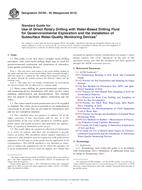
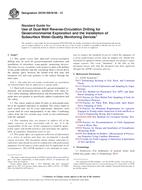 ASTM D5781/D5781M-13..
ASTM D5781/D5781M-13..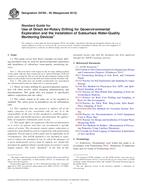 ASTM D5782-95(2012)..
ASTM D5782-95(2012)..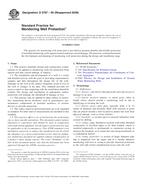 ASTM D5787-95(2009)..
ASTM D5787-95(2009)..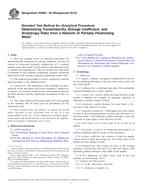 ASTM D5850-95(2012)..
ASTM D5850-95(2012)..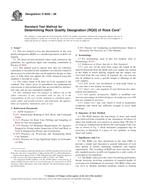 ASTM D6032-08
ASTM D6032-08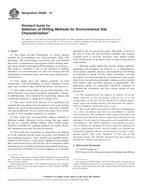 ASTM D6286-12
ASTM D6286-12
 Cookies
Cookies
